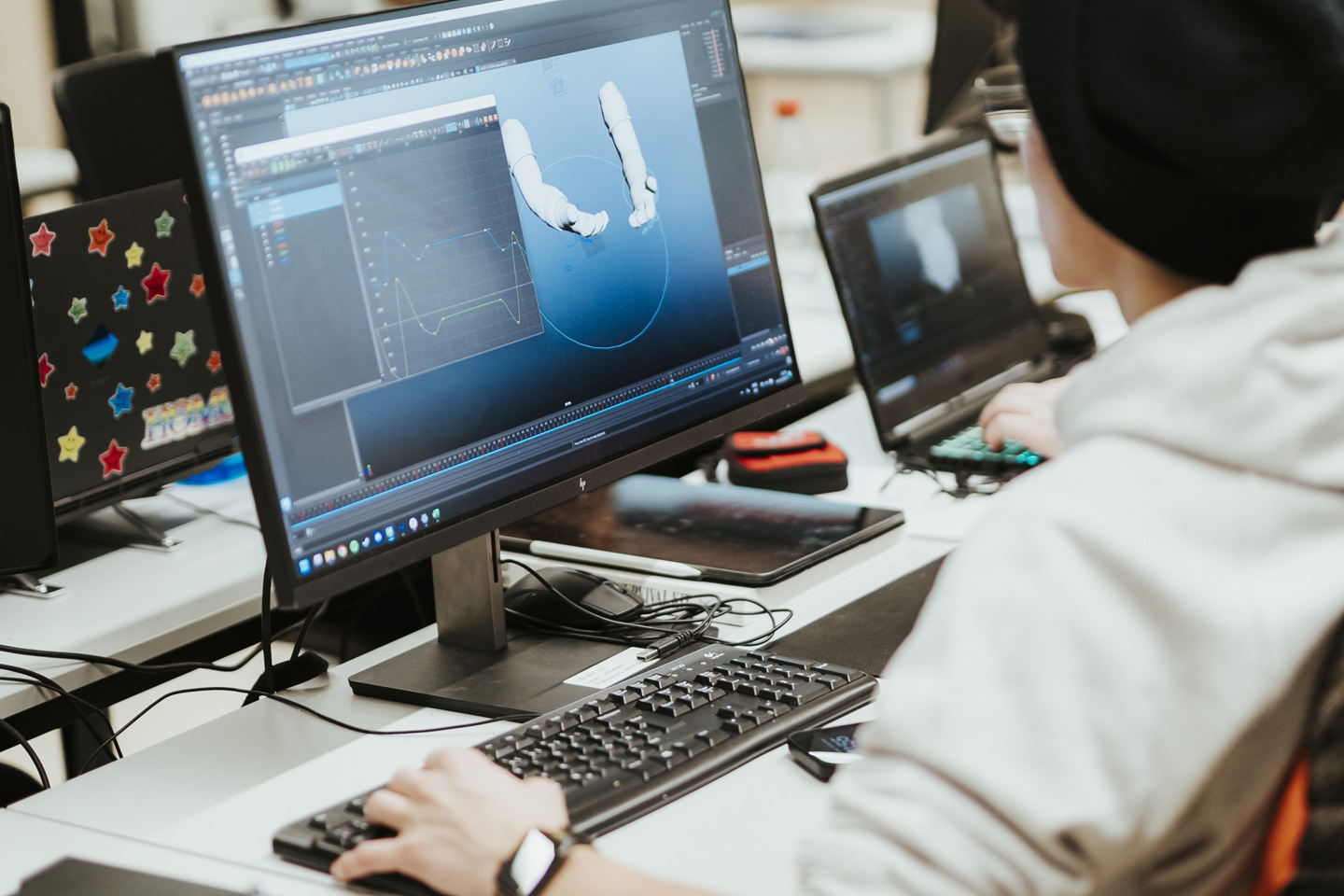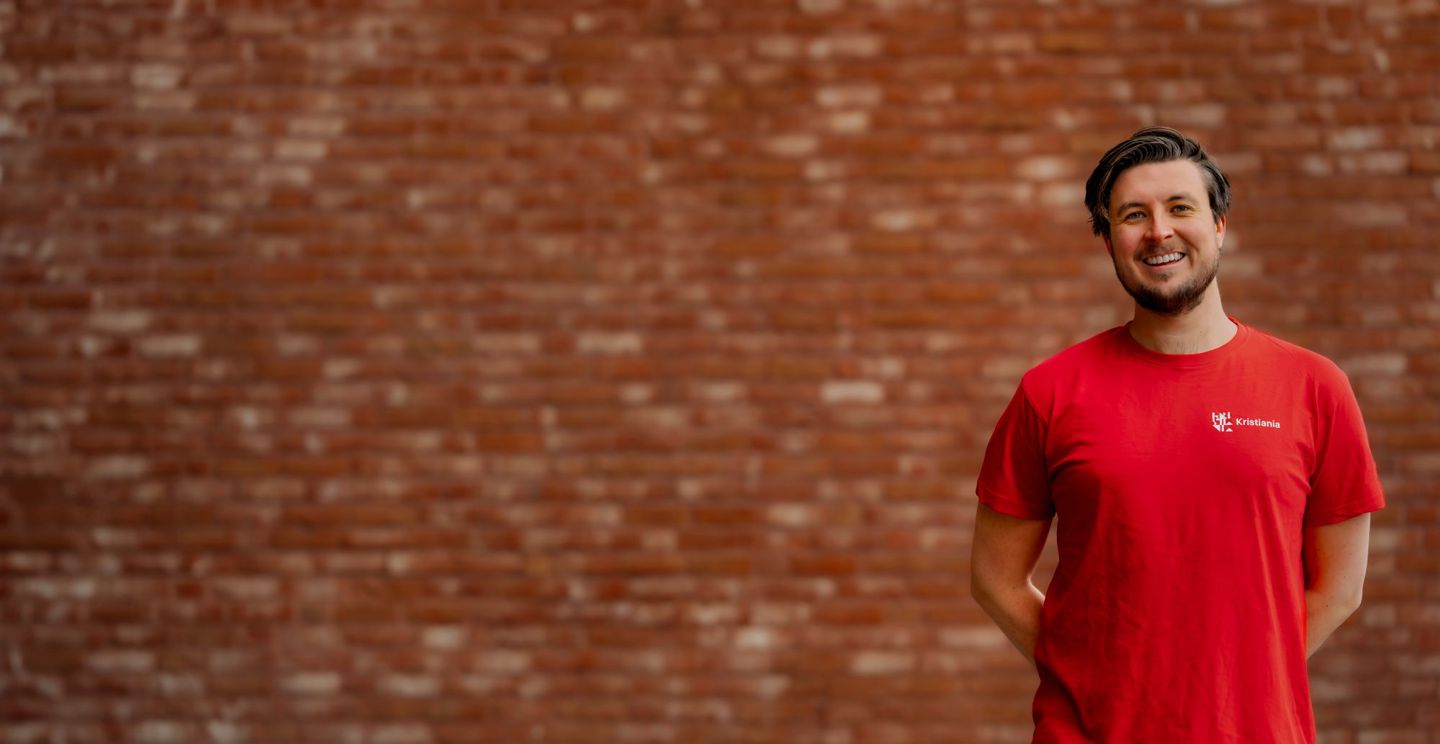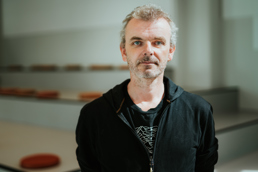
Master in Media Arts
The Master in Media Arts empowers you to develop groundbreaking projects across the fields of film and computer arts – fostering your creative vision in an interdisciplinary, international environment.
Key information
Interdisciplinary
The program is designed to develop advanced skills and critical perspectives that cross boundaries within media arts.Creative freedom
Develop your artistic voice and deepen your focus – whether in cinematic storytelling, experimental expressions, or interactive worlds.Taught by leading artists and industry experts
Learn from experienced professionals and guest lecturers who are actively shaping media arts and creative industries.Important deadlines
The application deadline is June 1st. Portfolio and motivation letter must also be submitted by June 1st. Diplomas and certificates are due by July 15th.Admission requirements
This program has specific admission requirements, including the submission of a portfolio and motivation letter. Read more further down the page.Tuition fees
62 800 kr per semester*. Additional information about prices can be found here.
- Master
- Fall 2025
- Full-time
- 120 Points
- Oslo
- 2 years
- English
Learning outcomes
The Master in Media Arts program offers a dynamic and collaborative environment where aspiring creatives can thrive. You will actively participate in interdisciplinary teams alongside artists, game designers, screenwriters, filmmakers, technologists, and sound designers, fostering a rich exchange of ideas and perspectives.
This collaborative approach allows you to challenge and develop your expertise, working together to create innovative and unique solutions within the evolving landscape of media art.
Study model
- MAP5100Master Project 3
Master project 3 of 4
Info about Master Project 3
This course is building further on Master Project 1-2. Students continue to work on their projects and further develop the key aspects in close dialogue with supervisors, guests, and peers. Work on reflection is equally shared and discussed. In addition, students will be sharing their projects with external feedback groups such as companies, professionals, or students from other programs, to get feedback from, and practice, sharing in an unfamiliar environment.
- FOS5100Dissemination Strategies
This course teaches outreach strategies and methodology for creating visibility in digital networks through community building and crowdsourcing. It covers how the active use of digital networks can give access to resources that can strengthen the artist’s career and entrepreneurship, productions, IP (Intellectual Property), or co-creation as part of artistic practice.
This methodology of community interaction and co-creation is also used to create dissemination strategies that include traditional media and physical events. These strategies combine all these elements in communication strategies focusing on the artist’s profile, the artwork or research’s core messaging, and the analyzed relevance for the intended community.
One of the outcomes of the course is an outreach plan for the master project, including a strategy for the public presentation of the work and communication of the reflection and results to peers and the general public, tailored for individual projects.
- MAP5200Master Project 4
Master Project 4 of 4
Info about Master Project 4
This course is building further on Master Project 1-3. Students start on the fourth and final phase of their master’s project. Emphasis is placed on presentation and dissemination techniques, and students present and develop each other through feedback sessions and peer review of each other’s artwork and reflections. This course also offers workshops and discussions on financing, funds, co-producers, and networking. The course ends with the final submission of the master's project.
- UAI5100Exploring AI
Artificial intelligence (AI) is about machine learning, and how computers can be used to handle tasks requiring human intelligence. This can be used for tasks such as creating websites, videos, scripts, social media, animations, or other more specialized content such as concept art or 3D Models. It can also be used to create intelligent algorithms that can handle complex tasks that humans cannot easily achieve. Exploring AI will explore and test different methods in the use of AI for audio and visual content.
Important questions related to the course will be related to whether AI can be used in production versus quality requirements and efficiency, as well as aspects around the ethical side of AI such as use and misuse and property rights.
- PTK5100Procedural Art
Computation is a powerful medium for art creation. This course is about using Procedural tools, specifically tools that allow the creation of computer graphics using a set of rules. Procedural techniques can be used in media in a variety of ways. They can help to create a more organic or natural feel to a piece of work or help to add a more personal touch. They can also be used to help create a more consistent and coherent visual style across a project.
The course includes a brief history of generative art, highlighting early examples of computer-generated imagery.
Career opportunities
With this background, graduates pursue careers in a wide range of fields, including:
Film and media production – Director, editor, cinematographer, producer, production designer, and other key roles in film and media production.
Game design, interactive media – Game designer, interactive media developer, VR/AR developer, and related roles in digital storytelling.
3D-artist and animator for games, vfx and other media content.
Postproduction and visual effects – VFX artist, compositor, colorist, and specialists in postproduction and digital effects.
Visual art and exhibition practices – Installation artist, curator, exhibition designer, and roles in digital and interactive art.
Meet the faculty
Our staff
- Trygve Bjellvåg is an Associate Professor and researcher, as well as the Global Game Jam Regional Organizer for Scandinavia. Trygve has worked at Funcom, where he was involved in titles such as Dreamfall: The Longest Journey, Anarchy Online – Lost Eden expansion pack, Age of Conan, and The Secret World.
- Elin Festøy is a researcher, lecturer, and producer. She has extensive experience in the media industry and was behind the video game My Child Lebensborn, which won a BAFTA award in 2019.
- Hanne Westgård is an Associate Professor. She has previously worked as a photographer, editor, and vision mixer at NRK, TV2, and Fabelaktiv. She holds degrees in television journalism, film studies, and education.
- Morten Moen is a former VFX Supervisor at Storm Studios. He has played a key role in developing the VFX industry in Norway and has worked on over 60 films and TV series.
How we work
- This MA in Media Arts blends film, games, VFX, and more with hands-on master projects from day one. Explore, collaborate, and connect with industry as you shape the future of media art.
- The program is enriched by visiting artists, guest lecturers, industry mentors, and internship opportunities, giving you direct exposure to real-world creative environments.
-
Kristiania is at the forefront of media art education, with a strong focus on collaboration and interdisciplinary practice. You will explore the future of audiovisual storytelling, immersive experiences, and interactive media.
Any questions?

